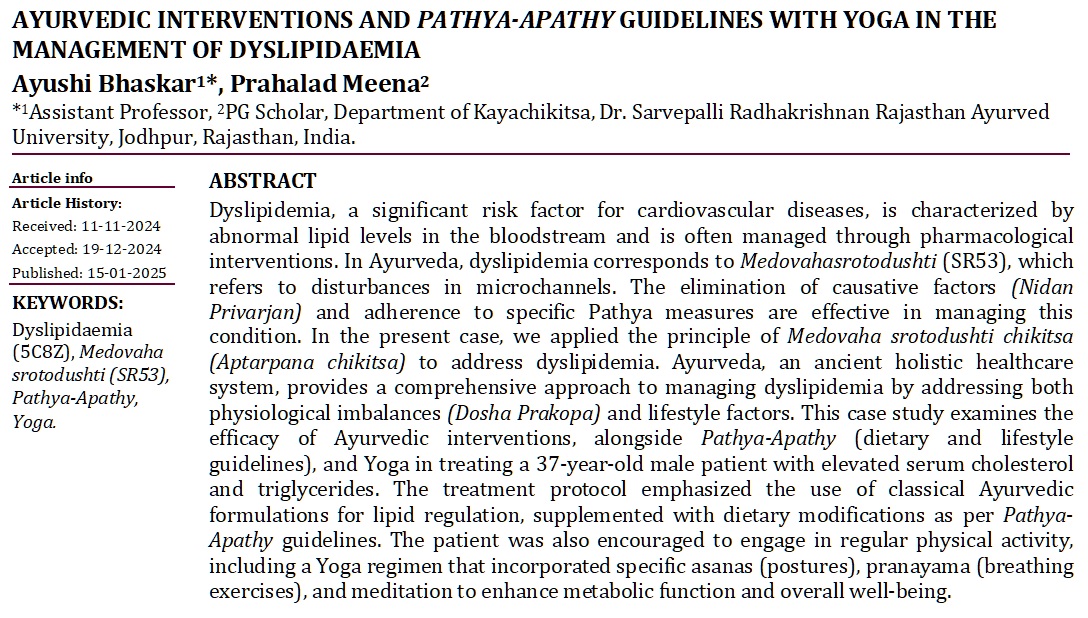Ayurvedic Interventions and Pathya-Apathy Guidelines with Yoga in the Management of Dyslipidaemia
DOI:
https://doi.org/10.47070/ayushdhara.v11i6.1741Keywords:
Dyslipidaemia (5C8Z), Medovaha srotodushti (SR53), Pathya-Apathy, YogaAbstract
Dyslipidemia, a significant risk factor for cardiovascular diseases, is characterized by abnormal lipid levels in the bloodstream and is often managed through pharmacological interventions. In Ayurveda, dyslipidemia corresponds to Medovahasrotodushti (SR53), which refers to disturbances in microchannels. The elimination of causative factors (Nidan Privarjan) and adherence to specific Pathya measures are effective in managing this condition. In the present case, we applied the principle of Medovaha srotodushti chikitsa (Aptarpana chikitsa) to address dyslipidemia. Ayurveda, an ancient holistic healthcare system, provides a comprehensive approach to managing dyslipidemia by addressing both physiological imbalances (Dosha Prakopa) and lifestyle factors. This case study examines the efficacy of Ayurvedic interventions, alongside Pathya-Apathy (dietary and lifestyle guidelines), and Yoga in treating a 37-year-old male patient with elevated serum cholesterol and triglycerides. The treatment protocol emphasized the use of classical Ayurvedic formulations for lipid regulation, supplemented with dietary modifications as per Pathya-Apathy guidelines. The patient was also encouraged to engage in regular physical activity, including a Yoga regimen that incorporated specific asanas (postures), pranayama (breathing exercises), and meditation to enhance metabolic function and overall well-being.
Downloads

Downloads
Published
Issue
Section
License
Copyright (c) 2024 AYUSHDHARA

This work is licensed under a Creative Commons Attribution-NonCommercial-ShareAlike 4.0 International License.


